The following is an extract from my book Best of British: The Stories Behind Britain’s Iconic Brands, published by Prestel. Dedicated copies are available to buy here
–
James Smith & Sons
Two or three times every day, a bell rings through the shop of James Smith & Sons in London. It proclaims, to the waiting shop staff, that an umbrella is ready.
When a customer purchases one of the house’s single-stick umbrellas, the tip of the umbrella must be cut to a length that corresponds to the customer’s height.
A single-stick umbrella is essentially a walking stick with a canopy, and is strong enough to be used in the same way. The customer must be measured, therefore, using an old adjustable stick, and the tip cut to size.
The adjustment is done in the workshop downstairs, while the customer waits. He peruses the rare snakewood canes, perhaps, and their ornate carved handles. Or stares out onto the busy street outside: James Smith & Sons is, as a writer once said, an island in a sea of traffic.
Then all of a sudden, the clear peal of the bell. A subterranean worker, rather than walk all the way up to the shop, has struck the bell with his finished umbrella and left it hanging on an adjacent rail. It’s a delightful way to be informed that your order is ready.
The existence of such traditions will not surprise a casual visitor to Hazelwood House – the building James Smith & Sons has occupied since 1857 on New Oxford Street.
There is a myriad of souvenirs from almost 150 years in continuous business, including an odd little mezzanine – where clerks can look down suspiciously on customers – and a horseshoe hanging from the ceiling – to ward off the bad luck of opening umbrellas indoors.
Robert Harvey, who runs the firm today, is the fifth generation to be in charge. The name hasn’t been Smith for a while – it changed through marriage – but he is proud to still run a family-owned company in the centre of London.
His son-in-law, Phil, also works in the shop, and recently had a son. “That boy’s future is all set out for him,” Robert quips.
The company was founded in 1830 on Foubert’s Place, just off Regent Street. James Smith was a one-man band with a workshop in the back and a counter in the front. Customers would ring for attention and he would come out to take orders.
“I like to think that we retain some of that same atmosphere,” says Robert, “with the workshop downstairs and orders coming up and down.”
There have been a few eccentric orders over the years (though fewer these days, with many of the customers international or online).
One customer famously wanted an umbrella in every English wood that was available. James Smith & Sons fulfilled the order, with over 40 umbrellas in total. “We could probably do the same today, but most of the woods wouldn’t be grown in England unfortunately,” says Robert.
The trouble is trees must be farmed specifically to supply sticks for umbrellas. They are ‘coppiced’, with the trunk cut off about three feet from the ground and new shoots allowed to grow out.
So apple wood, perhaps the most English of the materials available, cannot be harvested from apple orchards. It requires dedicated farming – most of which is now in Italy or eastern Europe.
Most visitors to James Smith & Sons are not looking for dozens of woods, however, or even something special. They just want a well-made, functional umbrella – and this is precisely what the company has always prided itself on supplying.
“We like to think of ourselves as a democratic operation, with an emphasis on quality and utility,” says Robert.
The shop still sells umbrellas for £15, as well as £500, and can repair almost anything. It’s a far cry from the disposable, £5 umbrellas sold at most London train stations – but also refreshingly different from the sniffy boutiques of Mayfair.
Photography: Horst Friedrichs


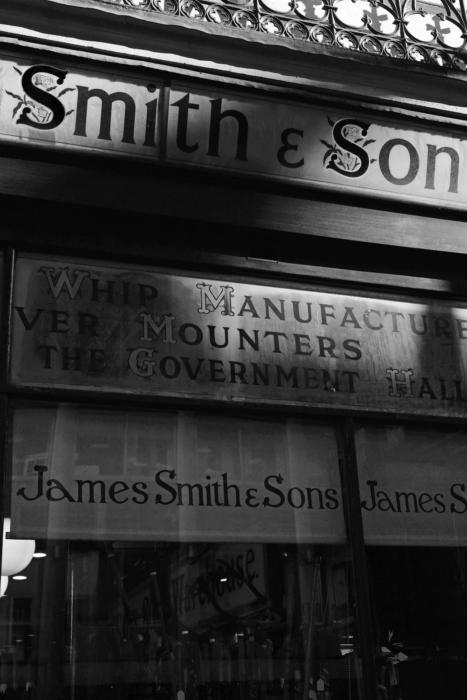
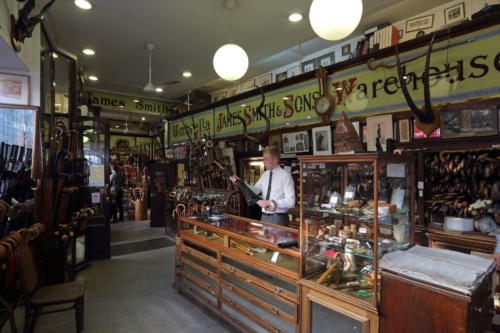
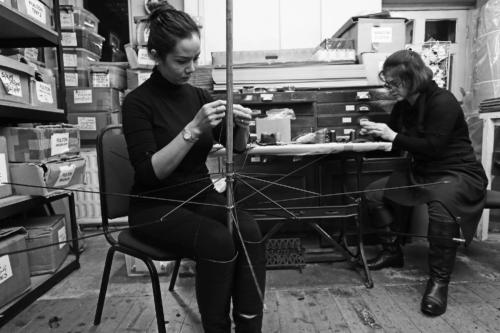
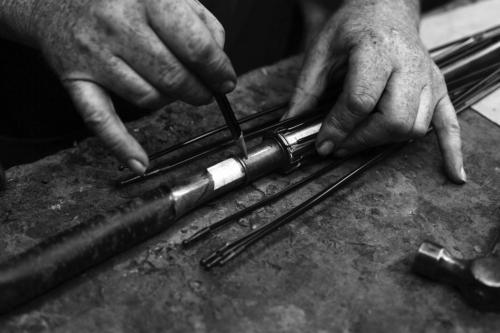
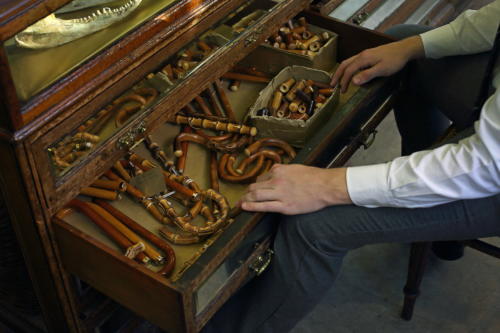
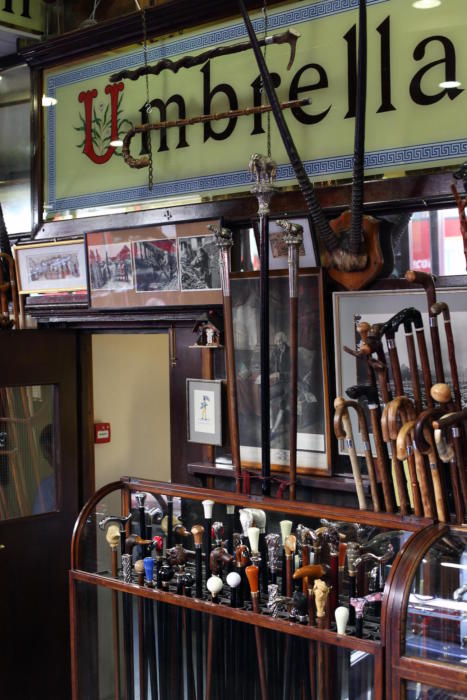


























I think your article captures admirably the atmosphere and feeling of J. Smith & Son and the reason I give them my business. It is rather rare, nowadays, to find producers that stand for quality without bling or pretence; for accessibility without going for the lowest common denominator.
Just out of interest, what do the umbrellas at the £15 end of the spectrum look like?
I have one of their whangee handled city umbrellas. I bought it several years ago and it’s manages to keep the rain off while looking great. Visiting the shop is also a pleasure – a bit like stepping back in time – although I had to wade through a small crowd of rubbernecking tourists to get to the counter.
Smith & Son makes wonderful umbrellas, and the atmosphere of the shop is just an added value. I’ve had the same Smith town umbrella for over thirty years now, but still visit occasionally just to look around, and I always feel as though Dickens will stroll in any minute and ask for a new ferrule for his walking stick.
For years I planned to buy an umbrella at James Smith & Son. I had lived a few hundred meters from the shop early last decade, but then did not have a chance to go to Britain for nine years. Finally, on a visit to London in 2012, I walked into the shop, carefully chose my umbrella (the best they had, I think, with a one-piece oak stick from tip to handle), steeled myself for the price and signed the credit card slip for 300 pounds.
Having wanted something for so long, I was just delighted to finally have it and to find that the quality was everything I had hoped for. We all know that experience of having a prized new possession that keeps attracting our attention. I repeatedly picked it up and admired it. Samuel Pepys in his diary mentioned being unable to resist looking at his lovely new watch. I was the same with my umbrella.
Then, three days after the purchase, I left it in a taxi. I still remember standing in Soho Square, crestfallen, as I realized that the umbrella was not with me and the taxi was already out of sight.
I hoped the umbrella might be handed in to the London taxi lost property office. It should have been, a few drivers told me. But I also knew what I was going to do if it wasn’t. Just before the end of that trip it hadn’t been handed in. So I walked back into James Smith & Son and forked out another 300 quid for an identical umbrella. If I hadn’t, I would have been miserable every time it rained.
I had a very similar umbrella experience to Bradley. When I first took a job in the city in 2008, I realised I needed a proper umbrella. After some research I realised James Smith & Sons was the place to go. I remember the shock of paying £150 for an umbrella out of my first pay check but I absolutely loved it. The whoosh sound it made when opening it up made it almost feel like a pleasure walking out in the rain. I loved it and cared for it for 10 years and a few weeks ago, left it on the train, never to be seen again. Today I go back to the store to buy myself a new one and hopefully I can look forward to the rain again.
Compared to Brigg and Fox, I seem to love James Smith’s umbrellas the most. Plus, they use nylon on their stick umbrellas, which is thicker and wears better than the usual thin polyester.
Thanks Charles, I didn’t realise that about the different synthetic canopies